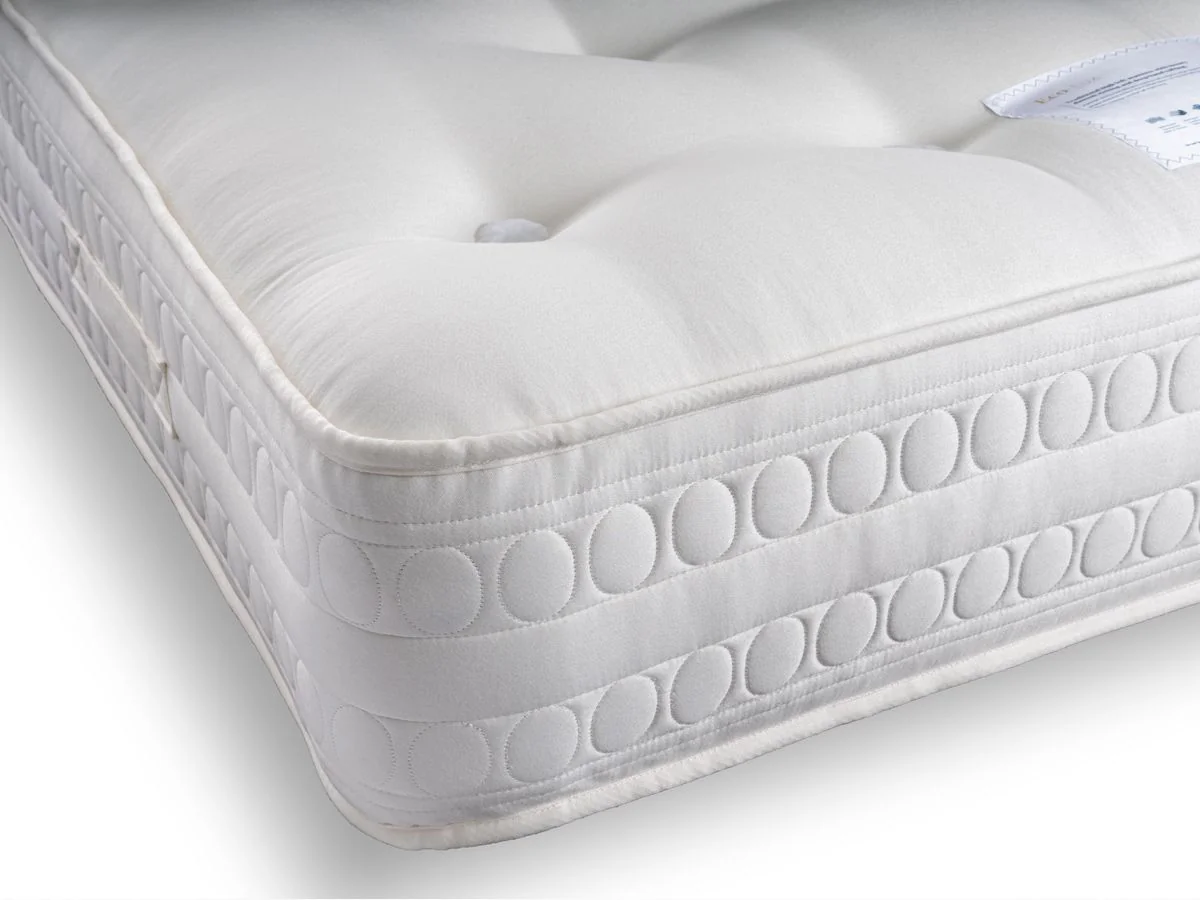Free UK Delivery*
0% Finance Available
Old Bed & Mattress
Sleep Talk Blog, Bed and Mattress Guides
What Makes a Mattress Eco-Friendly? 5 Mattresses Uncovered.
What Makes a Mattress Eco-Friendly?
Mattresses have a large or low carbon footprint depending on where they are made and what they are made from.
Eco-friendly mattresses have the lowest carbon footprint; however, ‘eco-friendliness’ is achievable in a few different ways.
Some mattresses use natural materials, shunning plastics and chemicals, favouring organic materials with a lower carbon footprint.
Other times, manufacturers opt for carbon offsetting, such as international tree-planting projects rated to absorb X tonnes of CO2 annually. This balances company emissions, but it doesn’t make a mattress eco-friendly.
If you want a genuinely eco-friendly mattress, you should avoid synthetic mattresses (such as memory foam) in favour of natural alternatives like latex foam.
Natural mattresses are the ONLY eco-friendly options
The only eco-friendly mattresses you can buy are natural – these have no synthetic materials and no chemicals (aside from a fire retardant chemical in some cases, although graphite is preferred, which is natural).
Most organic materials have a 70-80% lower carbon footprint than synthetic alternatives. For example, one polyester shirt has a 5.5kg carbon footprint, while a cotton shirt has a 2.1kg footprint.
The reason is simple: natural materials grow, unlike synthetic materials formed through chemical bonds. They are made from proteins and cellulose, requiring no processing other than mild refinement for mattresses.
You should take claims of ‘eco-friendliness’ with a pinch of salt whenever mattress brands talk about synthetic mattresses. Synthetic mattresses use many chemicals, so they can only pass as eco-friendly using the carbon offsetting route.
Eco-friendly mattress materials
Here’s a list of materials considered eco-friendly:
- Organic cotton – this is a naturally replenishable, pesticide-free material.
- Bamboo – this is a natural fibre with a low carbon footprint.
- Graphite - this is used in foams as a fire retardant layer.
- Wool – this is from sheep, which need shearing for their health.
- Mohair is from the Angora goat, a hypoallergenic alternative to sheep’s wool.
- Latex foam - this is made from the sap of the rubber tree via tapping, which does not require cutting the tree down.
- Stainless steel – this is for the springs (where applicable). Stainless steel is recyclable and has a minimal environmental impact.
Transport and logistics are also a crucial part of eco-friendliness
Even if a natural mattress has certified organic materials, it has a large carbon footprint if it comes from China to the United Kingdom.
Eco-friendly mattresses are made in the country they are sold in, which means buying a British-made mattress. Alternatively, the next best thing is a mattress manufactured in the EU and transported with green shipping.
Some mattress manufacturers go to great lengths to bury that they make their mattresses in countries with a notoriously high carbon footprint. Thankfully, you can always ask them and get clarification before purchasing.
It’s best to get a British-made mattress for eco-friendliness because it will have fewer transport emissions. Additionally, Britain uses 28.9% renewable energy, and many factories have switched to 100% renewable energy tariffs.
Eco-friendly mattress recommendations
We offer a wide range of natural mattresses starting from just £369 for a king. These are some of our favourites based on real-world testing:

Sleepeezee Perfectly British Strand 1400 (firm)
This mattress is made in Britain and uses 100% British wool layers with 1,000 pocket springs for firm support.

Sleepeezee Wool Supreme (medium-firm)
The Sleepeezee Wool Supreme is made in Britain with 2,400 pocket springs and a luxurious damask cover, with 100% British wool and fibre for the filling.

Shire Beds Eco Deep (medium)
The Shire Beds Eco Deep is made in Britain with wool, mohair, silk, cashmere fillings, and an Eucalyptus treatment for anti-bug qualities.

Giltedge Beds Eco Lux (medium-soft)
Ideal for people under 140 lbs, the Giltedge Beds Eco Lux has natural fillings, a damask cover, and a vented border for optimal airflow.

Giltedge Beds Royal 7000 (medium-firm)
The Giltedge Beds Royal premium mattress has lambswool, pashmina, alpaca, cotton, and bamboo fillings with 7,000 pocket springs for a luxurious sleep.

